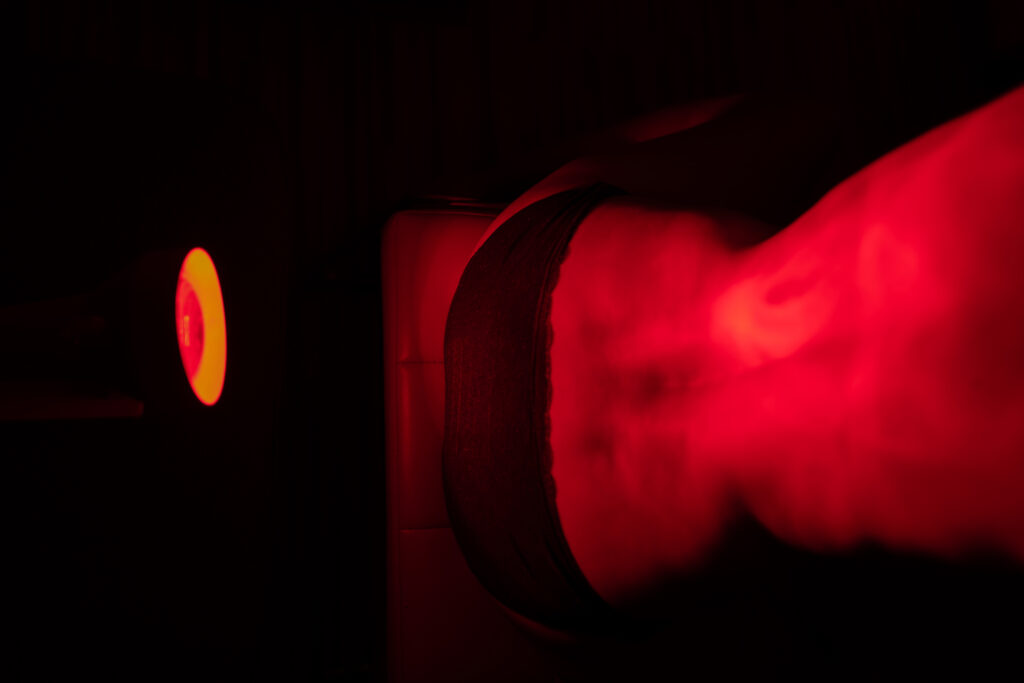
Woman with infrared Treatment back pain
How Safe Is Infrared Light Therapy For Regular Pain Management?
If you’re looking for an alternative method for managing regular pain, infrared light therapy may have caught your attention. But how safe is it really? Infrared light therapy involves the use of low-level light to alleviate pain and promote healing. In this article, we’ll take a closer look at the safety aspects of infrared light therapy for regular pain management, giving you the information you need to make an informed decision about incorporating it into your pain management routine.
Overview of Infrared Light Therapy
Definition of infrared light therapy
Infrared light therapy, also known as low-level light therapy or photobiomodulation therapy, involves the use of specific wavelengths of infrared light to provide pain relief and promote healing in various conditions. The therapy is non-invasive and typically administered through light-emitting diode (LED) devices or laser devices.
Mechanism of action
The mechanism of action of infrared light therapy revolves around the interaction between light and cellular molecules. When infrared light is absorbed by the cells, it stimulates the production of adenosine triphosphate (ATP), which is the primary source of energy for cellular processes. This increased production of ATP enhances cellular metabolism and promotes the repair and regeneration of tissues. Additionally, infrared light therapy also triggers the release of endorphins, natural pain-relieving chemicals in the body, providing relief from pain.
Benefits of infrared light therapy
Infrared light therapy has shown promising results in the management of various pain conditions. It has been found to reduce pain, inflammation, and swelling, as well as improve blood circulation and enhance tissue repair. The therapy is frequently used for conditions such as arthritis, back pain, muscle soreness, and injury. Additionally, infrared light therapy is also known to have a positive impact on mental health, with some studies suggesting its efficacy in treating symptoms of depression and improving overall well-being.
Studies on Safety of Infrared Light Therapy
Clinical trials and research findings
Numerous clinical trials and research studies have been conducted to assess the safety and efficacy of infrared light therapy. These studies have consistently demonstrated the therapy’s safety profile, with minimal adverse effects reported. Research findings have shown that infrared light therapy is well-tolerated by individuals, with no significant side effects observed in the majority of cases.
Analysis of potential risks
While infrared light therapy is generally considered safe, there are certain considerations to keep in mind. Excessive exposure to the therapy can lead to burns or skin damage, emphasizing the importance of adhering to recommended usage guidelines. Additionally, individuals with certain medical conditions or taking specific medications may need to exercise caution or consult with a healthcare professional before undergoing infrared light therapy.
Comparisons with other pain management methods
Infrared light therapy offers a non-invasive and drug-free alternative for pain management, which sets it apart from other conventional treatment modalities. When compared to pharmacological options, such as nonsteroidal anti-inflammatory drugs (NSAIDs), infrared light therapy has the advantage of minimal to no potential side effects, making it a suitable choice for individuals who prefer non-pharmacological approaches. Furthermore, unlike surgical interventions, infrared light therapy does not involve the risks associated with invasive procedures or lengthy recovery periods.

Specific Considerations for Regular Pain Management
Recommended usage guidelines
To maximize the benefits of infrared light therapy and ensure safe application, it is essential to follow recommended usage guidelines. These guidelines typically include factors such as the distance between the device and the body, the duration of each session, and the frequency of therapy. Adhering to these guidelines helps optimize the therapeutic effects of infrared light therapy while minimizing the risk of adverse effects.
Frequency and duration of therapy sessions
The frequency and duration of infrared light therapy sessions can vary depending on the condition being treated and the individual’s response to the therapy. Generally, individuals may start with shorter sessions of around 5-10 minutes and gradually increase the duration as tolerated. The therapy is often administered several times a week, with some individuals benefiting from daily sessions. However, it is important to consult with a healthcare professional to determine the appropriate frequency and duration of therapy for each individual.
Monitoring of treatment progress
To assess the effectiveness of infrared light therapy and monitor treatment progress, individuals may keep a record of their symptoms, pain levels, and functional improvements. This can help identify trends and determine whether adjustments to the therapy regime are necessary. Regular communication with a healthcare professional is also recommended to evaluate the overall impact of the therapy and make any necessary modifications to the treatment plan.
Potential Side Effects and Precautions
Common side effects
The side effects associated with infrared light therapy are generally mild and temporary. Some individuals may experience redness or warmth in the treated area, which typically subsides shortly after the therapy session. In rare cases, individuals with sensitive skin may experience mild skin irritation. However, these side effects are usually transient and resolve without any intervention.
Safety precautions for different individuals
While infrared light therapy is considered safe for most individuals, there are certain precautions to consider depending on an individual’s specific circumstances. Pregnant women and individuals with photosensitivity disorders are advised to consult with a healthcare professional before undergoing infrared light therapy. People with active skin infections or open wounds in the treatment area should also exercise caution.
Contraindications and warnings
Infrared light therapy is contraindicated for individuals with known sensitivity to light or those who are currently taking medications that increase light sensitivity. Additionally, the therapy should not be used directly over the eyes or on areas with active cancerous lesions. It is crucial to thoroughly review the contraindications and warnings associated with infrared light therapy to ensure safe and appropriate use.

How Safe Is Infrared Light Therapy For Regular Pain Management?
Treatment for Specific Pain Conditions
Back pain
Infrared light therapy has shown promising results in alleviating back pain, a common condition that can significantly impact daily life. By penetrating deep into the tissues, infrared light helps reduce inflammation, relax muscles, and promote the healing processes, ultimately leading to pain relief and improved functionality. Regular sessions of infrared light therapy in conjunction with exercises and other therapeutic approaches can be an effective strategy for managing back pain.
Arthritis
Arthritis, characterized by joint pain and inflammation, can benefit from the application of infrared light therapy. The therapy’s ability to reduce inflammation and increase blood circulation in the affected joints can lead to pain reduction and improved joint mobility. Infrared light therapy can be used alone or in combination with other arthritis management techniques, such as medication and physical therapy.
Muscle soreness and injury
Infrared light therapy has gained popularity as a treatment modality for muscle soreness and injuries. Whether caused by athletic activities or everyday wear and tear, muscles can experience increased blood flow and relaxation with infrared light therapy. This can aid in the reduction of muscle soreness, facilitate tissue repair, and accelerate the recovery process following an injury.
Professional Recommendations
Expert opinions on safety and efficacy
Experts in the field of pain management have generally expressed positive views regarding the safety and efficacy of infrared light therapy. They highlight its non-invasive nature, minimal side effects, and potential therapeutic benefits in a wide range of pain conditions. Pivotal clinical trials and research studies have provided valuable evidence supporting the integration of infrared light therapy into clinical practice.
Integration of infrared light therapy into clinical practice
Infrared light therapy is increasingly being integrated into clinical practice, with healthcare professionals incorporating it into treatment plans for pain management. Physical therapists, chiropractors, and other healthcare practitioners utilize infrared light therapy alongside other modalities to enhance patient outcomes and improve overall well-being. By leveraging the benefits of this non-pharmacological approach, healthcare professionals can offer their patients a multifaceted pain management strategy.
Training and certification for practitioners
As infrared light therapy gains recognition and popularity, specialized training and certification programs are emerging to ensure practitioners possess the necessary knowledge and skills to administer the therapy safely and effectively. These programs focus on understanding the underlying principles of infrared light therapy, appropriate device selection and usage, contraindications and precautions, and treatment protocols. Obtaining certification in infrared light therapy helps demonstrate a practitioner’s competency and commitment to delivering quality care.

How Safe Is Infrared Light Therapy For Regular Pain Management?
Comparison with Other Pain Management Therapies
Non-invasive alternatives
Infrared light therapy stands out among non-invasive pain management alternatives due to its unique mechanism of action and broad applicability. Unlike heat therapy or transcutaneous electrical nerve stimulation (TENS), which primarily target pain modulation, infrared light therapy addresses pain, inflammation, and tissue repair simultaneously. This multifaceted approach can provide a comprehensive and holistic solution for individuals seeking non-invasive pain relief.
Pharmacological options
Compared to pharmacological options, such as NSAIDs or opioids, infrared light therapy offers several advantages. While medications may bring potential side effects or risks, infrared light therapy poses minimal to no such concerns. Additionally, the therapy’s non-addictive nature makes it a viable alternative for individuals who wish to avoid dependence on pain medications.
Surgical interventions
Infrared light therapy presents a non-surgical option for individuals who prefer to avoid invasive procedures. Unlike surgery, which often entails risks and a lengthy recovery period, infrared light therapy is non-invasive, painless, and requires minimal recovery time. This makes it an attractive option for individuals seeking pain management without the invasiveness and associated drawbacks of surgical interventions.
Accessibility and Affordability
Availability of infrared light therapy devices
Infrared light therapy devices are increasingly accessible to individuals for home use. These devices come in various forms, including handheld units, pads, and full-body panels, offering convenience and flexibility. Many reputable manufacturers produce reliable and user-friendly devices that are readily available for purchase online or in select brick-and-mortar stores. However, individuals should ensure they invest in high-quality devices that conform to safety standards.
Cost considerations for individuals
The cost of infrared light therapy devices can vary depending on factors such as the type of device, brand, and additional features. Handheld units are generally more affordable compared to larger, full-body panels. While the upfront cost may seem significant, it is important to consider the long-term benefits and potential cost savings associated with reduced dependence on medications or medical procedures for pain management.
Insurance coverage
Insurance coverage for infrared light therapy may vary depending on the specific insurance provider and the terms of the policy. While some insurance plans may cover the therapy, others may not deem it medically necessary or may classify it as an investigational treatment. It is advisable to consult with the insurance provider directly to determine the extent of coverage and any associated requirements or documentation needed.

Personal Experiences and Testimonials
Success stories from individuals
Many individuals have reported positive experiences and significant pain relief with infrared light therapy. Testimonials often highlight the therapy’s effectiveness in reducing pain, improving mobility, and enhancing overall well-being. These personal accounts provide insights into the real-life impact of infrared light therapy and serve as encouragement for others exploring this non-invasive pain management option.
Factors that may influence effectiveness
Several factors can influence the effectiveness of infrared light therapy, including the severity and duration of the pain condition, individual responsiveness, adherence to treatment protocols, and overall health status. It is important to approach infrared light therapy with realistic expectations and recognize that while it can provide significant pain relief for many individuals, individual experiences may vary.
User satisfaction and adherence
User satisfaction with infrared light therapy is generally high, particularly among individuals who experience noticeable pain reduction and improvements in their quality of life. Adherence to the recommended treatment protocols and consistency in therapy sessions are crucial for achieving optimal outcomes. Establishing a routine, tracking progress, and seeking guidance from healthcare professionals can help enhance adherence and maximize the potential benefits of infrared light therapy.
Future Directions and Research
Ongoing studies and potential advancements
As the field of infrared light therapy continues to evolve, ongoing studies are exploring its potential applications in various medical conditions. From exploring its effects on wound healing and neurological disorders to investigating its role in immune system modulation, ongoing research aims to expand our understanding of the therapy’s full potential. Continued research efforts hold the promise of uncovering new therapeutic applications and refining treatment protocols.
Emerging technology and innovations
Technological advancements are driving innovation in infrared light therapy. Improvements in device design, efficiency, and versatility are making the therapy more accessible and user-friendly. Emerging technologies, such as wearable devices and targeted delivery systems, offer new possibilities for customized and optimized treatment approaches. These advancements have the potential to further enhance the efficacy and convenience of infrared light therapy.
Areas of further investigation
While much progress has been made in understanding the safety and efficacy of infrared light therapy, there are still areas that warrant further investigation. Comparative studies evaluating the therapy’s effectiveness against other pain management modalities, long-term outcomes, and optimal therapy protocols for specific conditions are among the areas that require additional research. By continuing to explore these avenues, researchers can refine treatment guidelines and enhance patient outcomes.
In conclusion, infrared light therapy offers a promising non-invasive approach to pain management with a favorable safety profile. Extensive research has demonstrated its efficacy in diverse pain conditions, and expert opinions support its integration into clinical practice. By following recommended usage guidelines and considering individual considerations and precautions, individuals can experience the potential benefits of infrared light therapy. The therapy’s accessibility, cost-effectiveness, and high user satisfaction further contribute to its growing popularity. As future research advancements and innovations emerge, the potential applications and benefits of infrared light therapy are expected to expand, further establishing it as a valuable tool in the field of pain management.









